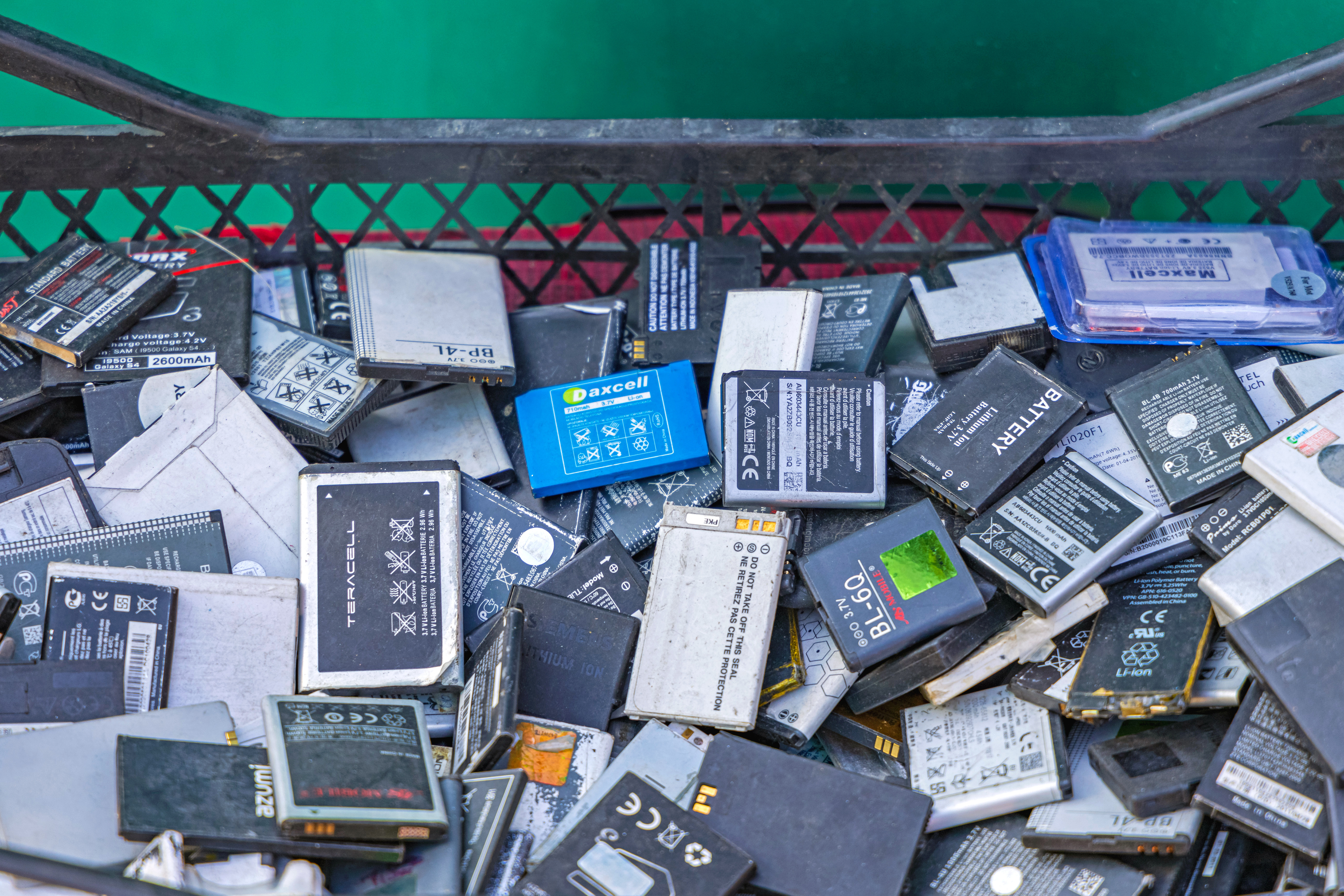Ensuring Compliant Lithium Battery Recovery and Shipping
By Thaddeus Puccini, Labelmaster Services
Lithium batteries, which power everything from laptops, data centers, EV cars, and power grids are ubiquitous in today’s modern world. Regardless of if a battery is new, used, a prototype, damaged or end-of-life being sent in for recycling, shipping a battery (or cell) can be very complex and is a highly regulated endeavor. This is mainly due to safety concerns because the threat of a thermal reaction/fire is all too real. As a result, shippers face numerous restrictions, from commercial aircraft bans to state-of-charge rules. Transporting, recycling and disposing lithium batteries compliantly is challenging, but there are best practices that businesses can follow to make the process easier.
As the market for recycling lithium batteries continues to grow, understanding the rules and regulations around transporting them will become even more important.
The Challenges of End-of-Life Battery Shipping
Safely shipping lithium batteries and complying with the many regulations that govern them can be challenging, especially depending on the state of the battery. Lithium batteries fall into two different categories: those that ship fully regulated and those that do not.
Batteries that are not damaged, defective, or recalled (DDR) and have a watt hour rating of 100Wh or less (e.g., laptop batteries) can ship as a non-fully regulated shipment by ocean, ground or cargo aircraft. Batteries with a watt hour rating of 300Wh or less (e.g., power tools) can ship non-fully regulated by ground in the U.S., but only if the proper labeling requirements are met according to the 49 (173.185) CFR.
Batteries with a watt hour rating greater than 300Wh (e.g., electric vehicle batteries), or any DDR battery regardless of watt hours, are considered “fully regulated class 9 shipments” and must ship as such. This means complying with all 49 CFR regulations, which include proper packaging, labeling, documentation, training and specified shipping methods.
It can be confusing, given that anyone with any part in shipping dangerous goods (DG) from a commercial establishment is considered a hazmat employee and must be 49 CFR trained and certified on every aspect of shipping, from filling out the bill of lading to physically loading the freight. Attending an interactive online training course can quickly and efficiently help accomplish this training requirement.
But it doesn’t stop at proper training. Another challenge is that shippers must also comply with all packaging regulations. These are some examples of the regulations you must follow when shipping a damaged, defective, or recalled lithium battery:
- Each cell or battery must be placed in individual, non-metallic inner packaging that completely encloses the cell or battery.
- The inner packaging must be surrounded by cushioning material that is non-combustible, electrically non-conductive, and absorbent.
- Each inner packaging must be individually placed in one of the following packaging types, meeting the applicable requirements of part 178, subparts L, M, P, and Q of this subchapter at the Packing Group I level:
- Metal (4A, 4B, 4N), wooden (4C1, 4C2, 4D, 4F), or solid plastic (4H2) box
- Metal (1A2, 1B2, 1N2), plywood (1D), or plastic (1H2) drum
Keep in mind this is just a small sample of regulations. Other factors that determine how to ship include whether the battery being shipped is stand-alone or contained in (or with) equipment, the battery’s state of charge, weight and destination.
Another regulatory body to consider is the Environmental Protection Agency (EPA). When shipping lithium batteries or cells for disposal or recycling, you must follow all proper EPA regulations, which may include environmental waste labeling (when shipping directly to a physical recycler) or – in some cases – hazardous material labeling and proper documentation. But keep in mind it’s not one or the other, it’s both: you must follow all proper regulations from the EPA and the DOT. Additional packaging changes may be needed as well.
Finally, there are the carriers to consider. Even if you are 100% in compliance, and training, paperwork, and packaging are perfect, it is still ultimately up to individual carriers to decide whether to take your shipment or class of DG. That’s why, before moving forward with any shipments, it’s best to first check with your carrier of choice to ensure they will accept it.

Important Questions to Ask
When shipping or transporting lithium batteries as part of the recycling process, it’s important to ask yourself these questions:
- Given my organization’s specific operations and environment, is simply adhering to the stated regulation enough, or should I take additional precautions?
- Am I shipping a single device or battery (and what size), or a large quantity of devices/batteries, and via what shipping method?
To fully determine packaging needs, there’s one more important question to ask: what role does my company play in transporting lithium batteries or products that contain them? Here’s why this matters:
- If you’re a shipper or returner: Whether you’re a manufacturer, retailer or other supply chain member, you’re responsible for transporting lithium battery devices compliantly.
- If you’re a recycler: You may offer the service of transporting end-of-life batteries or devices and need to ensure you follow all rules and regulations while taking into account safety measures of the batteries entering your facility. However, many recyclers do not handle the transportation side.
Best Practices for Lithium Battery Transport
While shipping batteries as part of the recycling process is a complicated endeavor, there are steps you can take to simplify the process:
- Avoid a common mistake. Never use the same box a new battery or device came in when it comes to returning/shipping a damaged battery. Damaged battery regulations have much more stringent packaging requirements.
- Understand the risk. Sometimes merely meeting the requirements isn’t enough. If you have a damaged lithium battery and do everything according to the rules, you’re still responsible if there is a thermal event in transit. Shipping while meeting the bare minimum doesn’t guarantee that it’s 100% safe. In some cases, you may want to exceed the minimum requirements to be extra cautious and further limit liability.
- Pay attention to training. Training matters, especially when it comes to fully regulated shipping. Invest in quality training to keep you and your staff engaged and prepared. Online, interactive and 3D training can be incredibly useful in helping employees digest complicated DG compliance and shipping regulations in a more convenient, interesting and memorable format.
- Make it easy on yourself. When shipping damaged or defective batteries, it’s strongly encouraged to use special permit packaging. It’s simple to use, does not require 49 CFR training, and has a much more user-friendly packaging experience (e.g., you’re able to use corrugation).
- Scrutinize special permit packaging. Not all special permit packaging is created equal. You need to know what the packaging has been tested with, because a 20W flashlight, a 50W laptop, and a 100W battery won’t react the same way. Whenever you get special permit packaging, you need to ask: what was tested? How many watt hours? What was the state of charge at the time of testing? Can I see the actual testing data/videos?
- Consider next-generation packaging. Some modern packaging solutions are engineered specifically for transporting lithium batteries, and can provide a thermal barrier that mitigates the risk of fires by containing pressure, fire, gasses and projectiles without using gel packs, heavy liners or fillers. This makes transporting lithium-related items safer, easier and more cost-effective.
- Consult an expert. Double check with a regulatory expert to make sure everything is compliant. Regulations change, so it’s important to have a resource that keeps up with the regulations and can answer questions when needed.

Outlook
The battery recycling market will only continue to grow. In fact, the global lithium battery recycling market is projected to grow from $4.6 billion in 2021 to $22.8 billion by 2026.1 The U.S. lithium-ion battery recycling market alone is expected to reach $3.7 billion by 2027 (up from $764.3 million in 2020), with the consumer electronics segment to dominate that market.2
The primary reasons for growth are increasing demand for electric vehicles, as well as various countries providing government subsidies for battery recycling.1 Additionally, recycling helps meet a growing demand for supply chain sustainability. According to a recent MIT survey, more than one third of executives reported that their company’s commitment to supply chain sustainability has grown since COVID-19.3
With this expected growth in battery recycling, it’s more important than ever to stay up to date and truly understand the latest industry shipping regulations. Regulations change, especially when it comes to shipping and handling lithium batteries, so don’t just assume that what was correct a year or two ago is correct today.
The fact is, the lithium battery industry is complex. When it comes to regulations, it’s best to partner with an industry expert who can navigate new and changing rules for you and help keep your supply chain safe and compliant.
To learn more about how Labelmaster can support your lithium battery shipping needs, visit https://www.labelmaster.com/lithium-battery-resources or contact LithiumBattery@labelmaster.com.
1 https://www.marketsandmarkets.com/Market-Reports/lithium-ion-battery-recycling-market-153488928.html
2 https://www.researchandmarkets.com/reports/5302807/lithium-ion-battery-recycling-global-market#src-pos-2
3 https://sscs.mit.edu/2022-changes-over-time/
 Thaddeus Puccini
Thaddeus PucciniThaddeus Puccini is the Global Development Manager for Labelmaster, where his focus is on the safe and compliant shipping and handling of dangerous goods the world over. He specializes in custom packaging designs for damaged, defective, and potentially recalled lithium batteries. Currently
working with large electronic OEM’s worldwide, he has successfully shipped DDR batteries throughout Asia, Europe, South America, Canada, and the United States safely and in compliance. He is actively working on new packaging designs to accompany special permits and multilateral agreements
to help aid in the ease of shipping damaged and defective lithium batteries with some regulatory relief.